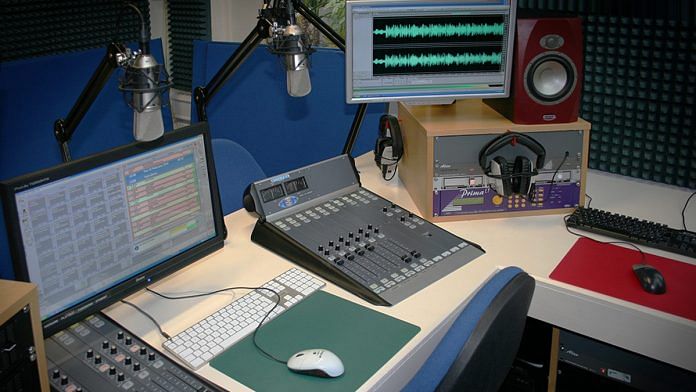New Delhi: Music, news, gossip, announcements and a lot of entertainment — radio has it all. If you’ve grown up in the pre-2010s, the radio was probably a constant in the background, be it at home or on the road. From the more commercialised FM radio to Vividh Bharti, radio is that versatile medium that has something for everyone. And it’s this versatility that helps it maintain its relevance in the age of the internet.
To celebrate radio and its importance, and to honour the day United Nations Radio was started, the UN adopted 13 February as World Radio Day in 2012.
In India, radio broadcasting started with the Radio Club of Bombay in June 1923, followed by the Calcutta Radio Club in the same year. The two clubs went bankrupt within a matter of years. It was not until 1936 that the then Indian State Broadcasting Service (established in 1930) was officially turned into All India Radio or Akashvani.
While FM radio only came to India in the 1970s, radio was a vital source of information and mode of communication before that. It played a major role in the Independence movement and World War II, with Subhas Chandra Bose’s Azad Hind Radio and Congress Radio, as well as other crucial broadcasts.
Even in the post-Independence era, until the advent of television in the ’80s, radio was the main mode of national communication. When former Prime Minister Indira Gandhi announced the Emergency, she did it through a national broadcast on AIR.
On World Radio Day, ThePrint brings you some facts from the history of Indian radio that will make you want to turn off your Spotify and tune in:
All India Radio is one of the largest broadcasting organisations in the world. It has 415 stations in 23 languages and 146 dialects, and 18 FM channels. It also boasts 99 per cent population coverage, meaning radio is accessible in some of the most remote parts of the country.
The iconic Akashvani jingle, which so many of us woke up to, was composed by Walter Kauffman. Forced to flee Prague due to Hitler’s rule, Kauffman found asylum in India and worked with AIR for more than a decade. His career as a composer flourished in Mumbai, and it even led to some film work for him.
Freedom fighter Usha Mehta is most known for setting up Congress Radio during the Quit India movement in 1942. It was an underground radio station that spoke vehemently against the British Rule, including speeches by Mahatma Gandhi, Ram Manohar Lohia and more. However, their sporadic functioning came to a halt when Mehta, along with four other women — Vithalbhai Jhaveri, Chandrakant Jhaveri, Babubhai Thakkar and Nanka Motwani — were arrested for running the anti-Raj station.
India’s first radio programme was launched in Chennai in 1942. Started by C.V. Krishnaswami Chetti, an electrical engineer, the Madras Presidency Radio Club broadcast pre-recorded music and comedy pieces for entertainment. The club’s radio programme was unique also because it offered to train its members on handling radio equipment and on how to broadcast. It reached out to all — men, women and students. The club ran into financial trouble and had to shut shop in 1929, but in the five years it was active, it attracted both amateur and professional talent and expanded its programme range to full concerts and plays.
Binaca Geetmala became the most popular radio show because of a ban on Hindi film songs on AIR. In 1952, the then minister of information and broadcasting, B.V. Keskar, banned the airing of Hindi film songs on Akashvani as he deemed them unfit for the Indian audience. He regarded the film industry and its music, and even Western music, with disdain, preferring Indian classical music. Due to this ban, Indians were forced to tune into Sri Lanka’s Radio Ceylon, which aired Binaca Geetmala, a countdown show of Bollywood songs. Hosted by Ameen Sayani, the show shot up in popularity like no other programme. It remained as popular even after the ban was lifted a decade later. In 1989, the show was shifted under AIR and ran till 1994.
While the role of women in the development of radio has been overlooked, their role in the growth of Indian community radio cannot be ignored. Radio, at the grassroot level, has been empowering women in rural India for decades now. Sangam, India’s first all-women community radio station, was set up in 2008 in Andhra Pradesh. Run by a group of Dalit women, the radio station employs local women and teaches them how to use radio. It runs news, feature stories of the village, entertainment and music shows as well.
India’s tryst with radio gets more interesting the more one digs into its long history of revolution, empowerment, and entertainment.
Also read: It’s World Radio Day, and in India, it’s having its finest hour




The first radio broadcast was in 1937 by M V Gopaiaswamy of Mysore which later on became the Mysore station of AIR.